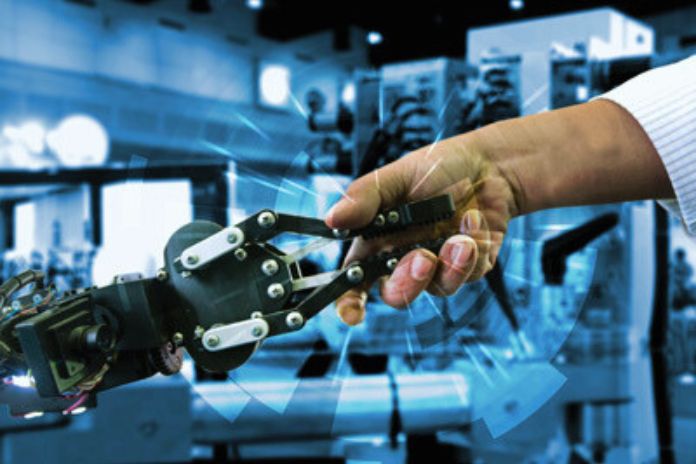While the role of people in the job market is resigned by digital transformation, a leap from Industry 4.0 to Industry 5.0 is taking place. Changes, mainly about what is expected of professionals, are taking place.
All employees, managers, and entrepreneurs must understand this process affects the entire production chain. But if you still don’t know what each of these concepts is about, stay calm. Today we will tell you this and what to expect from the future. Check out!
What Are The Modifications That Differentiate Each Industry Era?
Humanity has always evolved from innovative ideas. Today, disruptive technology is shaping the way people live. Industry 5.0 is just the last phase of development based on new solutions — mechanical, electronic, digital, etc. — that have transformed human life since the industrial revolution. The eras that precede the current one are:
- Industry 1.0: between 1760 and 1850, from the steam engine, there was the mechanization of production, productivity increased, and the first factories appeared;
- Industry 2.0: starting in the second half of the 19th century until the period of World War II, this era is marked by electricity and the assembly line;
- Industry 3.0: in 1950, the techno scientific revolution took its first steps in the automation of production processes and the field of information technology;
- Industry 4.0: automation has reached a full level in industries with machines communicating with each other — the internet and cyber-physical systems have shortened distances and increased operational efficiency.
How Did The Leap From Industry 4.0 To 5.0 Happen?
While the evolution of innovations marks the transitions between the other eras of the industry, the change from Industry 4.0 to Industry 5.0 is about redefining the role of human beings in this context.
The technology being used for communication and automation has stayed the same. Artificial Intelligence, Machine Learning, cloud computing, Big Data, augmented reality, IoT, robotic automation, 3D printing, nanotechnology, etc., are present in both eras.
The difference is the focus, which passes to new business models, more socially and environmentally sustainable. The relationships between companies and customers and, mainly, between man and technology have been transformed. Even with their advancement, people are still important in the work environment; only their functions are adapted.
What Are The Characteristics Of Industry 5.0?
Industry 5.0 is a direct evolution of its predecessor. It is mainly characterized by combining technology with human potential in an approach centered on people and no longer machines.
Technological advances like quantum computing continue in this era and will be greater. But people’s participation should maintain importance. Team collaboration and intelligent systems will remain a factor of competitive advantage.
Whether environmental, social, or economic, sustainability is another paradigm of the industrial revolution that was changed in the fifth industrial revolution. Technology should improve everyone’s life, giving companies a new attitude.
Finally, the speed that this type of solution adds to the day-to-day and the market requires management to respond quickly to market changes. However, these innovations also enable quicker decision-making.
What Are The Main Trends Related To Industry 5.0?
The transformation that classic business administration paradigms have undergone in Industry 5.0 must continue. The tendency is for a new vision of the world of work and companies to emerge with this. Changes such as:
- reduction of bureaucracy and more resolution;
- increased focus on well-being, mental health, and positive leadership in the workplace;
- improvement of people’s quality of life;
- more mobility, inclusive cities, and application of technologies for security in the urban environment;
- reducing the environmental impact of business;
- More conscious and informed consumption.
Why Should You Understand Industry 5.0?
The simplest answer is: to serve the 5.0 consumer. This audience values the focus on people’s well-being and expects companies to be engaged. However, this transition affects other societal human roles — employee, manager, and entrepreneur.
The impacts of the fifth industrial revolution affect the entire market, changing how we produce, work, live, and relate to each other. Technology will be part of everyday life, functioning as a communication, negotiation, and social and economic access channel.
Thus, the integration of these solutions and a change of attitude are necessary for the full performance of human activities in all these functions, being fundamental for business success.
How To Invest In Adapting My Business To Industry 5.0?
Adapting a business to Industry 5.0 involves adherence to new technologies in all processes, but it must mainly be concerned with preparing employees. Some ways to do this are:
- adapting the corporate culture to new values;
- Change the Mindset, starting to see the formation and training of the team as an investment and not a cost ;
- Invest in the digital literacy of employees at all levels so that it is possible to work with new technologies;
- Make data-driven decisions ;
- Make the selection processes more inclusive and focused on finding the human differential of each individual;
- constantly innovate ;
- working with leadership as a development tool and a source of security for the team;
- Develop skills such as assertive communication, agile adaptability, and the ability to deal with the growing complexity of the world of work;
- Consider the social and environmental impacts of industrial processes and act to minimize their negative effects ;
- Invest in cybersecurity.
Industry 5.0 is the last and current era of enterprise development. More than a technological evolution, this is a period characterized by balancing the participation of people and machines in the work environment, obtaining the best of each one’s differentials in favor of business results.
Also Read: Five Tips For Effective Business Planning












